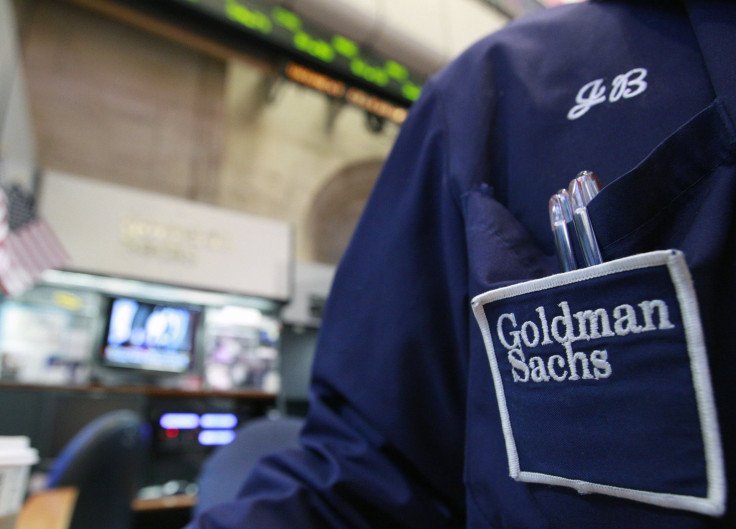Goldman Sachs’ Mortgage Crisis Settlement Payout Leaves $1 Billion In Wiggle Room

From the mouths of U.S. government officials, Goldman Sachs Group’s recent $5.1 billion settlement over mortgage-crisis misdeeds sounded like stiff punishment.
“Today’s settlement is another example of the department’s resolve to hold accountable those whose illegal conduct resulted in the financial crisis of 2008,” Benjamin Mizer, the Justice Department’s principal deputy assistant attorney general, said Monday.
“They knowingly put investors at risk and in so doing contributed significantly to the financial crisis,” added Rene Febles, deputy inspector general of the Federal Housing Finance Agency.
But analyses of the settlement’s particulars by International Business Times and others reveal that the headline number of $5.1 billion likely overstates the true cost to Goldman Sachs once tax deductions and credit multipliers are included. As the New York Times first reported, the total cost could be as much as $1 billion less than the advertised amount.
Breaking down the settlement, “$2.6 billion of the deal qualifies as a cost-of-doing-business tax deduction, allowing the bank to shift the cost of the settlement back on to taxpayers,” Michelle Surka, a research fellow at the U.S. Public Interest Group, an advocacy group, told International Business Times in an email. “This adds insult to injury, sends the wrong message about corporate misconduct and costs ordinary Americans.”
The settlement resolves claims that Goldman Sachs sold investors billions of dollars in bundled mortgage securities in the lead-up to the financial crisis, even as Goldman’s own employees were raising serious alarms about the quality of the underlying loans.
Fines (Not Nonfines)
Cash forfeitures make up more than one-half of the settlement. Goldman Sachs must pay $2.4 billion as a penalty to the Justice Department, as well as $875 million in payouts to various state and local agencies, adding up to $3.3 billion.
Tax law holds that fines and penalties cannot be deducted from corporate taxes, so the $2.4 billion stands. But the $875 million in other payments in Goldman’s settlement are likely eligible for cost-of-doing-business deductions at the statutory 35 percent corporate tax rate.
Indeed, in the paragraphs of the accord dealing with California and Illinois, state negotiators included explicit language specifying that “no portion of the funds in this paragraph is received as a civil penalty or fine.”
The $3.3 billion in fines and payouts, then, will likely cost Goldman a net $3 billion when tax deductions are included.
Consumer Relief
The rest of the amount detailed in the pact — $1.8 billion — consists of consumer relief mandates for communities and homeowners, remedies that include home loan modifications, principal forgiveness and investments in affordable housing developments.
But here too Goldman Sachs is positioned to pay less than the headline amount. Many of the consumer relief items not only qualify for tax deductions but also allow Goldman to get extra credit for its spending. For instance, a $1 million donation to an affordable rental development qualifies as $3.75 million toward the total. Goldman can earn $1.5 for every $1 spent in principal forgiveness to homeowners before Nov. 30, 2016.
These multipliers came out higher for Goldman than for banks such as JPMorgan Chase, which have struck similar deals with the multiagency mortgage crisis working group helmed by the Justice Department.
In a separate $280 million community investment package agreed to by New York Attorney General Eric Schneiderman, Goldman will get double the credit for every dollar it spends. With deductions, the total cost to the bank could come to less than $100 million for this portion of the settlement.
In all, Goldman could theoretically pay just $1 billion or thereabouts to qualify for the $1.8 billion in consumer relief promised to American homeowners and renters, once tax deductions are included. In other words, Goldman’s final tab could come in $800 million under the advertised amount owed in consumer relief. And that’s not counting potential tax credits tied to affordable housing investments, which could further dampen Goldman’s total costs.
Between the multipliers on consumer relief and the cost-of-doing-business tax deductions eligible throughout the settlement, Goldman could then pay more than $1 billion less than the headline $5.1 billion total advertised.
“This settlement is a victory for Goldman,” Dennis Kelleher, CEO and president of the Wall Street reform group Better Markets, said in a statement. “More than half of the $5 billion appears likely to be tax deductible, meaning U.S. taxpayers will be required to subsidize this settlement.”
In a statement, Goldman Sachs said it was pleased to put the matter to rest. “Since the financial crisis, we have taken significant steps to strengthen our culture, reinforce our commitment to our clients and ensure our governance processes are robust.” No individuals were either named or penalized in the settlement.
© Copyright IBTimes 2024. All rights reserved.





















